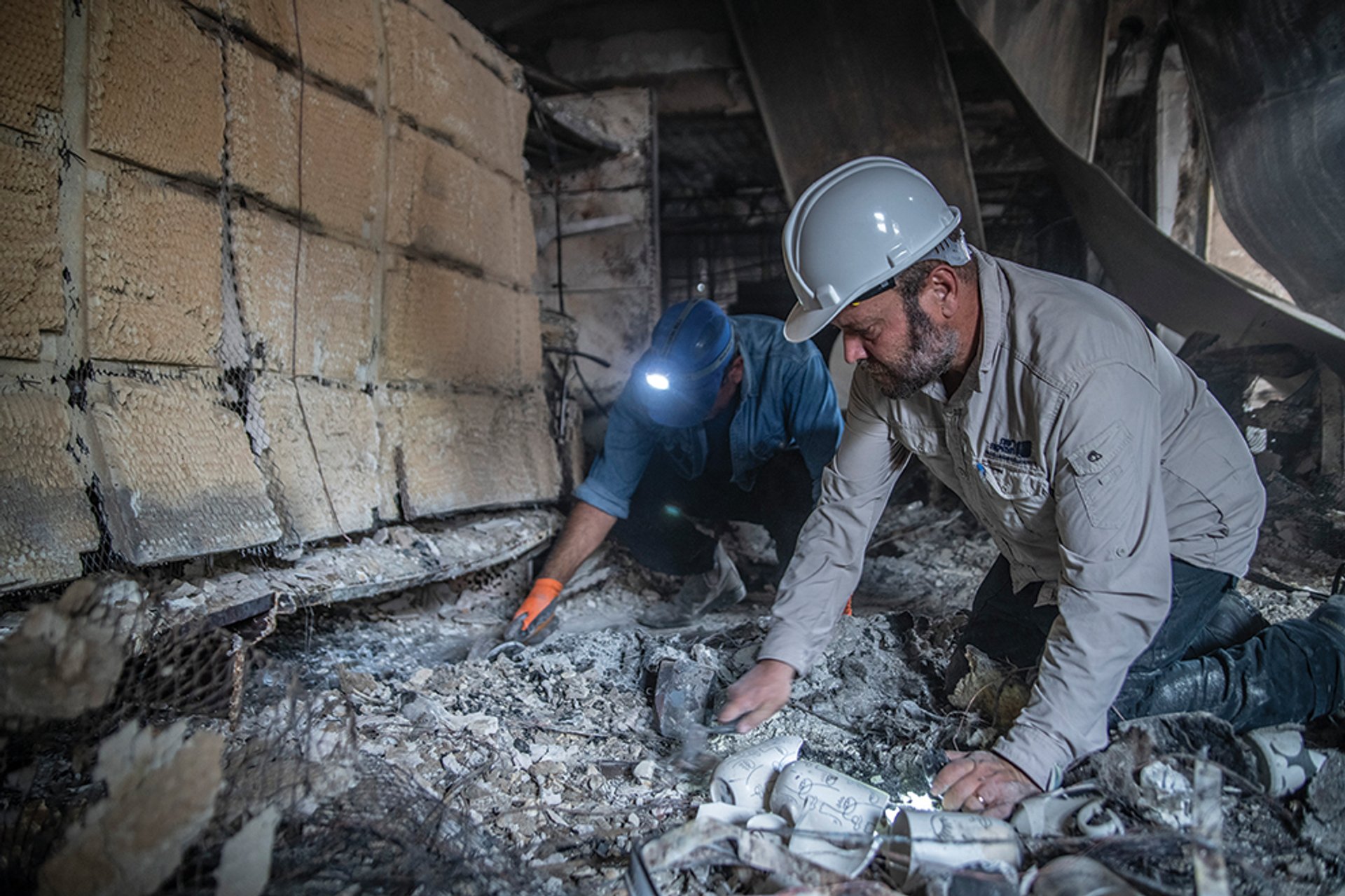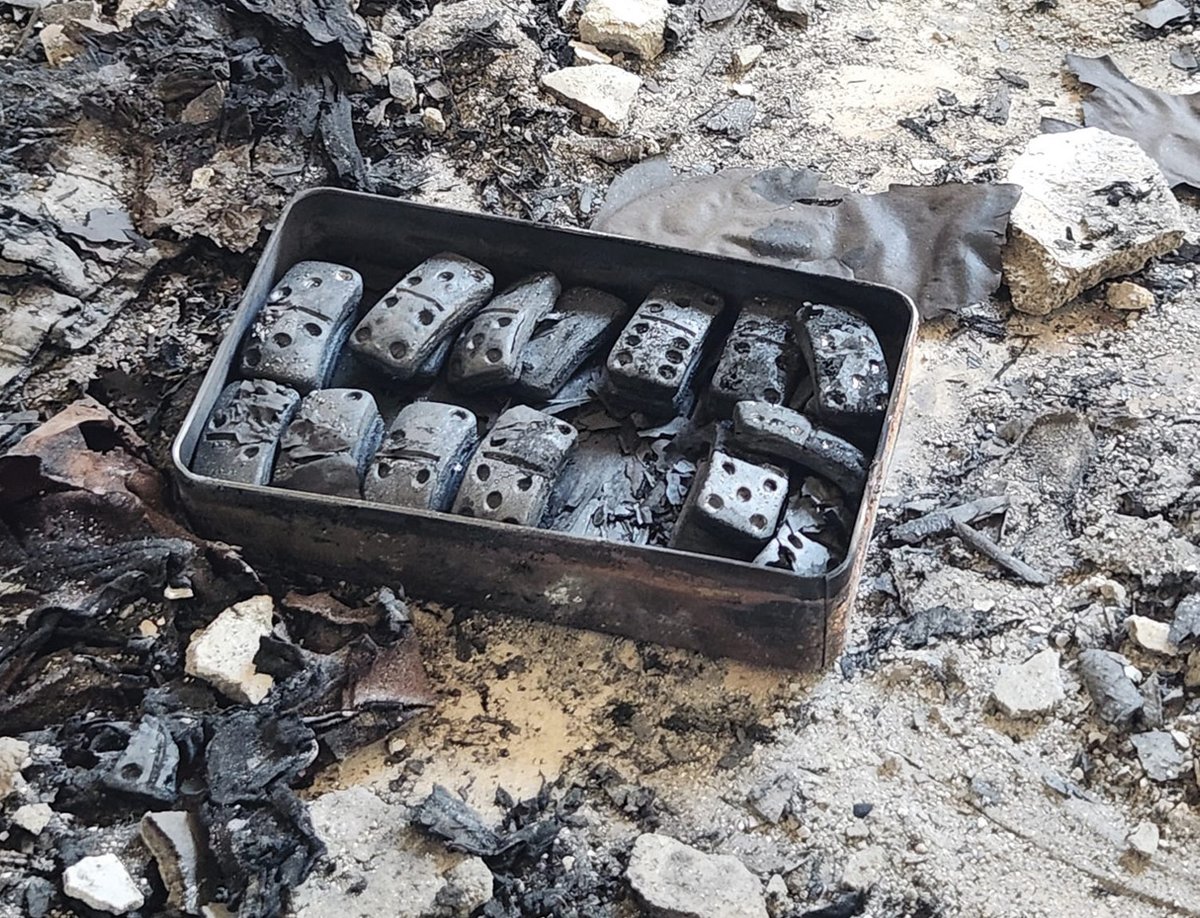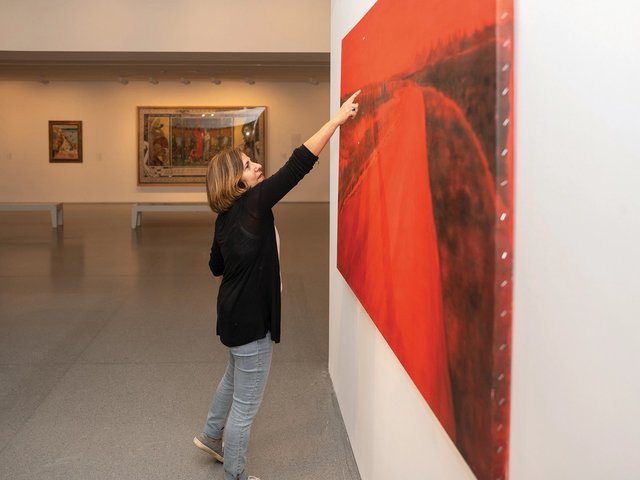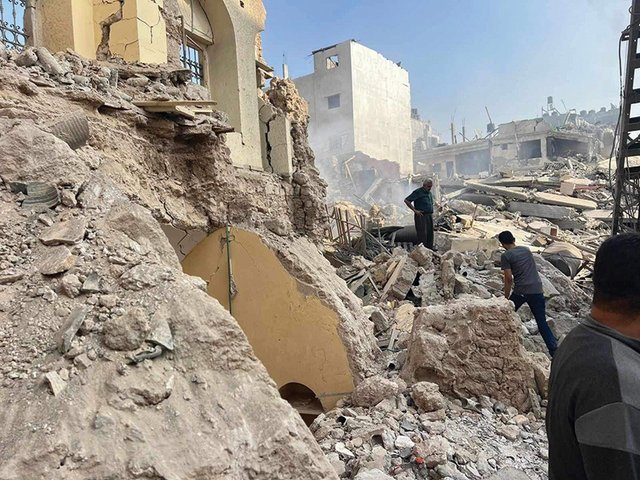There is no shortage of field work for the Israel Antiquities Authority (IAA), an independent governmental authority responsible for excavating, preserving, conserving and studying the region’s millennia-old relics. Yet for the past few weeks, a team of 15 IAA archaeologists has engaged in a very different task, aiding efforts to identify human remains within the destruction caused by the Hamas terrorist attack of 7 October, during which around 1,200 Israelis were killed and roughly 240 taken hostage—since a temporary ceasefire began on Friday 24 November, a total of 69 hostages have been freed by Hamas.
This is the first time the IAA has ever excavated a contemporary site. “The archaeological methods employed at ancient sites are similar to the methods applied here,” a spokesperson for the IAA said in a statement. “But it is one thing to expose 2,000-year-old destruction remains, and quite another thing—heart-rending and unfathomable—to carry out the present task searching for evidence of our sisters and brothers.”

Archaeologists are helping to identify human remains following Hamas’s attacks on 7 October—their first work on a contemporary project Photo: Shai Halevi; Israel Antiquities Authority
The initial work was performed by volunteers from ZAKA, a non-governmental search-and-rescue organisation that assists emergency services after terrorist attacks and other instances of unnatural death. Identification has been especially challenging for the victims of 7 October, because of the extent to which bodies were mutilated and incinerated. Around two weeks after the attack, Israel Defense Forces (IDF) Colonel Yossi Cohen reached out to the IAA for assistance.
“What we do, actually, is come in at the final stage when ZAKA is no longer finding things,” says Shai Halevi, an IAA photographer who performs three-dimensional imaging and has been photographing the Dead Sea Scrolls since 2010. “We use archaeological methods to go through the layers of destruction, sift through the houses and remove all the relevant layers, filter and identify human components such as bone fragments and things like earrings, and through these findings we are able to answer questions about missing persons.”
Archaeologists have used other techniques from their regular fieldwork such as dividing spaces into grids, placing the ash, rubble and bones from each quadrant into separate bags, and then sifting the contents through a sieve. In some cases, archaeologists gathered details from family members that could aid identification, including whether those missing had any implanted medical plates or devices. “We saw things that no person should ever see,” Moshe Ajami, a biblical archaeologist and deputy director of the IAA, told The Economist.
It is the archaeologists’ hope that they can help provide answers for families who still do not know the fate of their loved ones—whether they were murdered or taken hostage. As of 12 November, the IAA had successfully located remains for 12 individuals for whom no other evidence had been found. Remains of some of the terrorists who committed the massacre of 7 October are mingled with those of their victims.
“It’s a mixed feeling of: do you want to find something or do you not want to find something? Because if you find something, that means you’ve determined that someone is gone and at the same time, not finding someone means that they remain in this limbo of not knowing,” the archaeologist Joe Uziel told Reuters.
The pain of knowing
Initially, the archaeologists focused on each person’s last known location. As efforts progressed, the team began examining all the burnt houses and cars left in the wake of the 7 October attack. To date, the IAA has examined the Be’eri, Nir Oz, Kissufim, Alumim and Kfar Aza kibbutzes and around 20 devastated communities, plus the car park near Kibbutz Re’im containing burnt cars from the Supernova Music Festival, where more than 360 people were murdered.
As they search, sometimes in the presence of victims’ families, archaeologists accustomed to handling evidence of anonymous ancient life are confronted with a very tangible present. For many, it is difficult knowing details about those they search for. “Every time there was a briefing and we were told that we were going into the house of such and such a person, I didn’t listen,” Halevi says. “I don’t really want to attach names to the evidence that I find. It could be a man, a woman—I don’t want to know.”
Beyond the emotional hardship of their work, these archaeologists have also conducted their work under missile fire. At the beginning there were several attacks each day, according to Halevi, and the number has slowly decreased. “We have mobile shelters in the field and safe rooms—which don’t help during terrorist attacks but do help during rocket attacks. So, if we’re working in a safe room, we just stay in the safe room,” Halevi says. “If we’re out in the field, we lay on the ground. There were days when we worked with bulletproof vests and helmets.”
The work of the IAA archaeologists is ongoing, as hundreds of victims remain unidentified. “Our hope is that we can contribute to the certain identification for as many families as possible,” Eli Escusido, the director of the IAA, said in a statement. “It is an honour and a great responsibility, that [our archaeologists] are carrying out with great respect.”
On 7 October Hamas terrorists crossed into Israel on a murderous rampage, killing more than 1,200 people and taking around 220 hostages. The Israeli military responded to these atrocities with a declaration of war against Hamas, launching airstrikes and placing Gaza under siege. According to the Hamas-run health ministry, more than 14,500 Palestinians have been killed—most of them civilians.




